
Researcher in early Qur'ānic manuscripts. Shaolin Kungfu in my free time
8 subscribers
How to get URL link on X (Twitter) App


 2/10. 📜 Marcel 21b is a Qurʾānic fragment from the Fustat collection, today kept at the National Library of Russia. Composed of 4 horizontal leaves, it features archaic Ḥijāzī script, no vocalization and no surah titles..
2/10. 📜 Marcel 21b is a Qurʾānic fragment from the Fustat collection, today kept at the National Library of Russia. Composed of 4 horizontal leaves, it features archaic Ḥijāzī script, no vocalization and no surah titles.. 

 2/6. In 1535, the Holy Roman Emperor Charles V (1500-58) conquered the Kingdom of Tunis from the Ottomans. His troops looted the city – the Great Mosque az-Zaytuna and the palace of Hafsid King Mulay Hasan. They seized several copies of the Qurʼan and took them back to Europe.
2/6. In 1535, the Holy Roman Emperor Charles V (1500-58) conquered the Kingdom of Tunis from the Ottomans. His troops looted the city – the Great Mosque az-Zaytuna and the palace of Hafsid King Mulay Hasan. They seized several copies of the Qurʼan and took them back to Europe. 

 2/4 This magnificent mushaf was copied in AH 1283/CE 1866-67 by Kazasker Mustafa 'Izzet Efendi. Check the description and other pictures here: debaecque.fr/lot/147335/255…
2/4 This magnificent mushaf was copied in AH 1283/CE 1866-67 by Kazasker Mustafa 'Izzet Efendi. Check the description and other pictures here: debaecque.fr/lot/147335/255…

 2/6. She and Mingana published a short study in 1914 with a very attractive title: "Leaves from Three Ancient Qurans, possibly pre-‘Othmanic". But World War I started, and the manuscript – which was then exhibited in Leipzig - disappeared until 1936…
2/6. She and Mingana published a short study in 1914 with a very attractive title: "Leaves from Three Ancient Qurans, possibly pre-‘Othmanic". But World War I started, and the manuscript – which was then exhibited in Leipzig - disappeared until 1936… 

 2/5. Contrary to Sotheby’s description, the folio is written in a Kufic style called D.IV, maybe the oldest version of the 'classical' Kufic. A radiocarbon analysis supports a dating between 675 and 878 (95,4%), with 675–778 as the most probable range.
2/5. Contrary to Sotheby’s description, the folio is written in a Kufic style called D.IV, maybe the oldest version of the 'classical' Kufic. A radiocarbon analysis supports a dating between 675 and 878 (95,4%), with 675–778 as the most probable range.

 2/10. This manuscript was brought from Damascus to Germany by J. G. Wetzstein, consul of Prussia in Damascus between 1848 and 1862. Although Wetzstein doesn’t mention it, the copy may have come from the Great Mosque of the Umayyads, but this hasn’t been demonstrated yet.
2/10. This manuscript was brought from Damascus to Germany by J. G. Wetzstein, consul of Prussia in Damascus between 1848 and 1862. Although Wetzstein doesn’t mention it, the copy may have come from the Great Mosque of the Umayyads, but this hasn’t been demonstrated yet. 



 2/3. In 2022, the Castle of Chantilly exhibited these 38 manuscripts that provide us an exceptional snapshot of the scholarly production, sociocultural and religious life after the 15th. Besides the Qur'an and the traditions, the collection mainly deals with sufism and fiqh
2/3. In 2022, the Castle of Chantilly exhibited these 38 manuscripts that provide us an exceptional snapshot of the scholarly production, sociocultural and religious life after the 15th. Besides the Qur'an and the traditions, the collection mainly deals with sufism and fiqh 
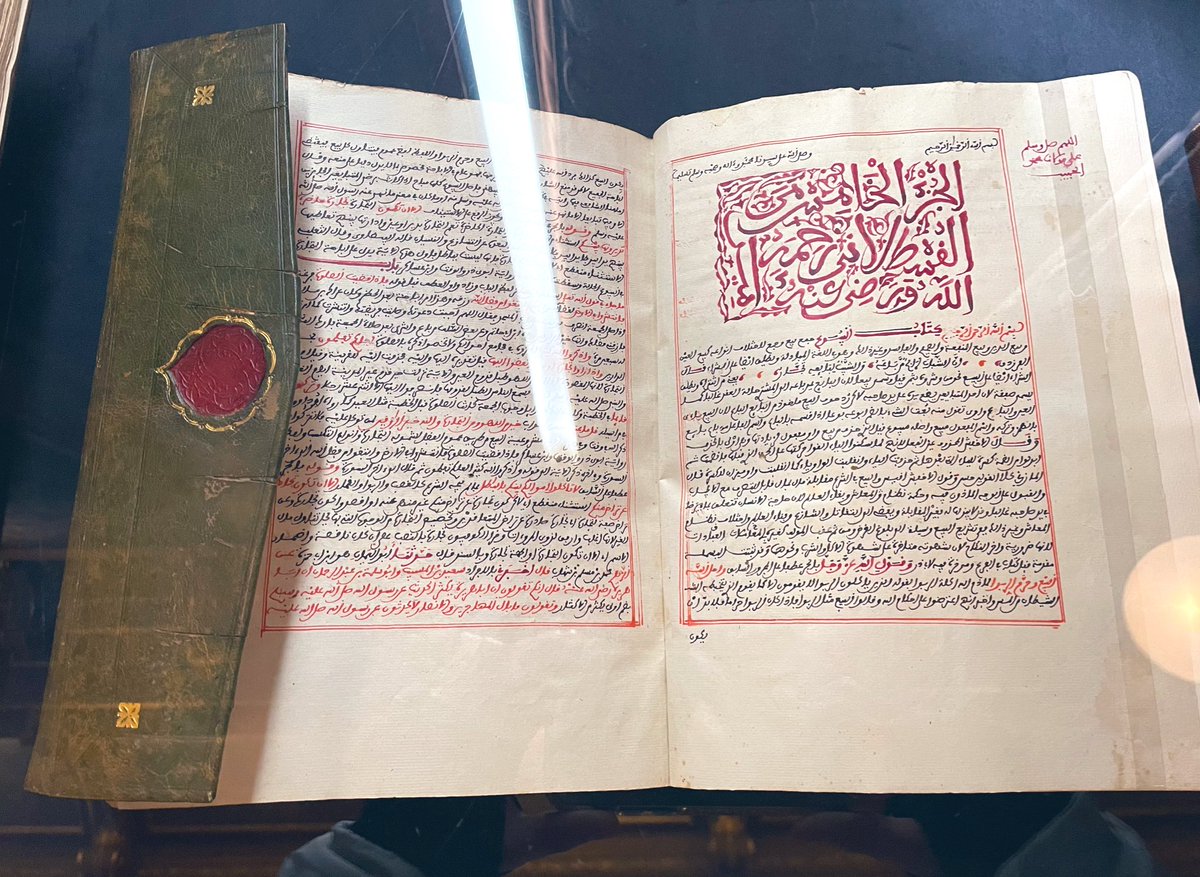

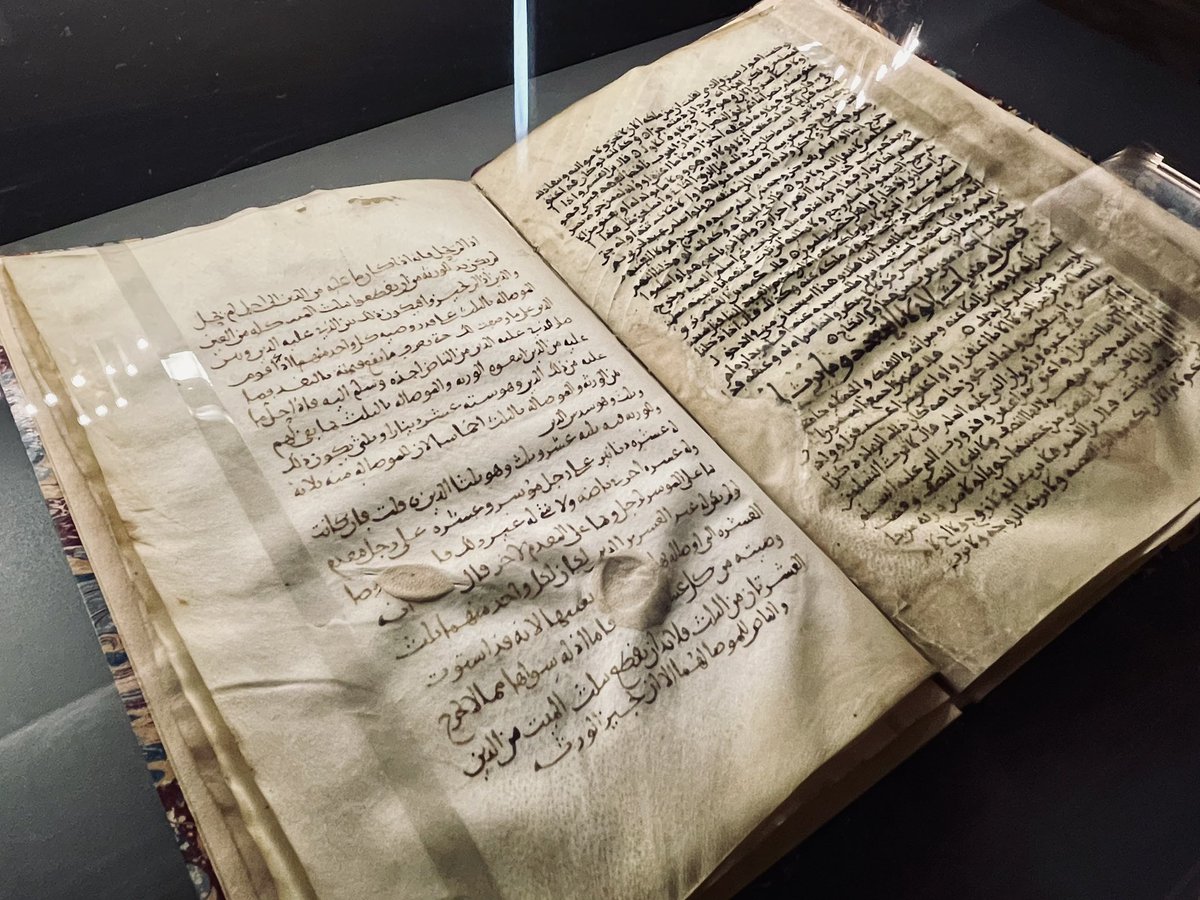

 2/17. During the Russian occupation of Central Asia in the 19th cent., General von Kauffman learned of the monumental manuscript, which at the time was stored in the Khodja-Ahrar Mosque in Samarkand.
2/17. During the Russian occupation of Central Asia in the 19th cent., General von Kauffman learned of the monumental manuscript, which at the time was stored in the Khodja-Ahrar Mosque in Samarkand. 
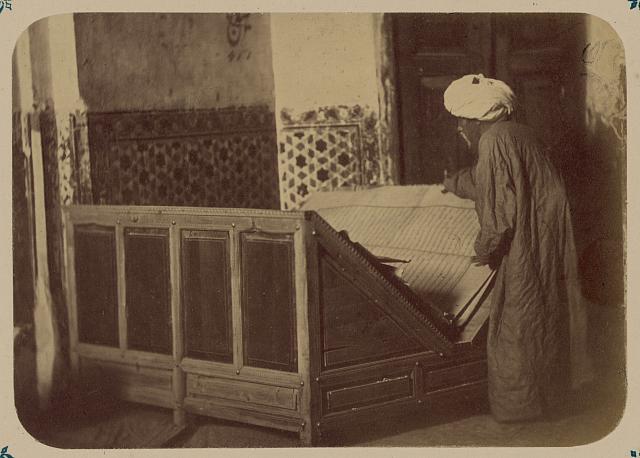


 2/10. The manuscript is preserved in a mausoleum of a sufi saint Muhammad Sādiq, who lived in the 15th CE, and, according to the legend, settled in the region with several sacred relics. Among them : a Qur’ān manuscript written by the caliph 'Uthmān and stained with his blood.
2/10. The manuscript is preserved in a mausoleum of a sufi saint Muhammad Sādiq, who lived in the 15th CE, and, according to the legend, settled in the region with several sacred relics. Among them : a Qur’ān manuscript written by the caliph 'Uthmān and stained with his blood. 

 2/10. The Library is named after the Great Mosque, built around 1120 CE by the Almoravid ruler ‘Alī b. Yūsuf b. Tashfin, who ruled over Morocco and Spain. During his reign, the city of Marrakesh became an important center attracting Andalusian and Moroccan scholars and artists.
2/10. The Library is named after the Great Mosque, built around 1120 CE by the Almoravid ruler ‘Alī b. Yūsuf b. Tashfin, who ruled over Morocco and Spain. During his reign, the city of Marrakesh became an important center attracting Andalusian and Moroccan scholars and artists. 
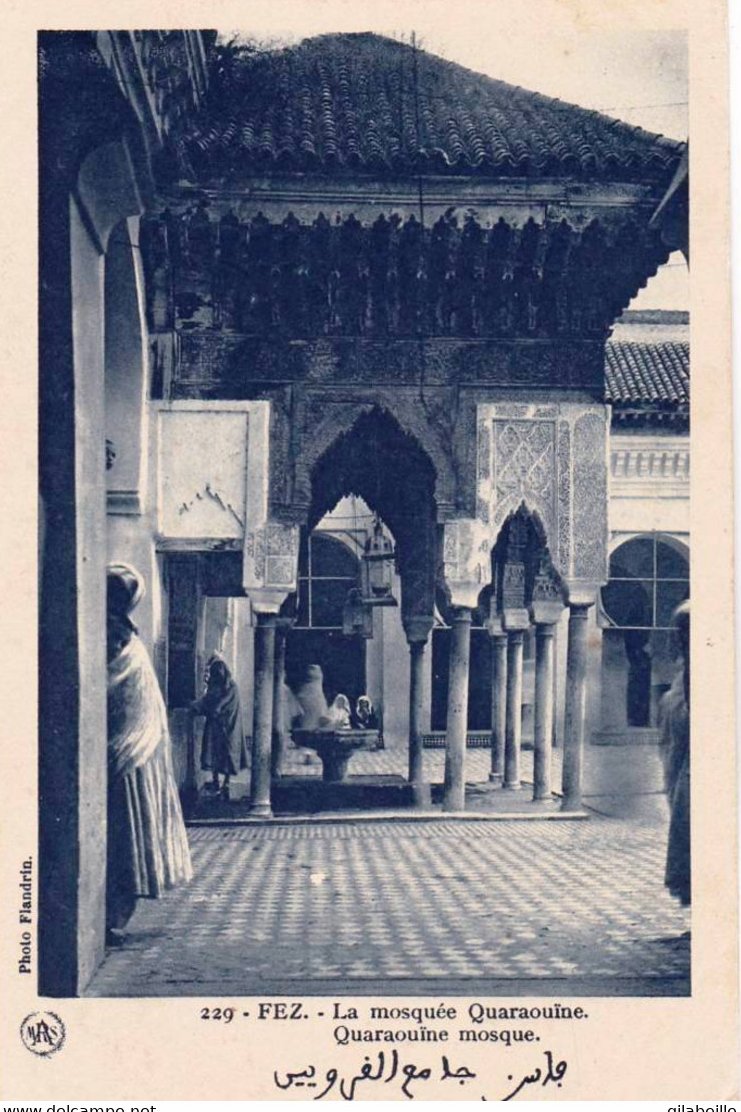


 2/4. This ruler gift a great number of rare manuscripts from his own collection – including many precious Andalusian manuscripts – to the Qarawiyyin library. As did many rulers, princes and princesses, scholars after him and for the next centuries.
2/4. This ruler gift a great number of rare manuscripts from his own collection – including many precious Andalusian manuscripts – to the Qarawiyyin library. As did many rulers, princes and princesses, scholars after him and for the next centuries. 

 2/8. The Ṣanʿāʾ palimpsest consists of not 1 but 2 Qurʾān texts that were sequentially copied onto the same material. The primary text - with the variants - was erased but the ink remains enough visible for it to be deciphered. The secondary text agrees with the canonical Qurʾān
2/8. The Ṣanʿāʾ palimpsest consists of not 1 but 2 Qurʾān texts that were sequentially copied onto the same material. The primary text - with the variants - was erased but the ink remains enough visible for it to be deciphered. The secondary text agrees with the canonical Qurʾān 

 2/6. In 1914, she and Mingana published a short study with the very attractive title: "Leaves from Three Ancient Qurans, possibly pre-‘Othmanic". But the 1st World War started, and the manuscript – which was then exhibited in Leipzig - disappeared until 1936…
2/6. In 1914, she and Mingana published a short study with the very attractive title: "Leaves from Three Ancient Qurans, possibly pre-‘Othmanic". But the 1st World War started, and the manuscript – which was then exhibited in Leipzig - disappeared until 1936… 

 I examinated a total of 942 leaves, dispersed in Paris, Gotha, Cairo, Istanbul and Detroit.. That's many materials for me, used to work on fragments of dozen of folios! And actually, Codex Amrensis 22 is not one but two manuscripts, mixed together at one moment of their history!
I examinated a total of 942 leaves, dispersed in Paris, Gotha, Cairo, Istanbul and Detroit.. That's many materials for me, used to work on fragments of dozen of folios! And actually, Codex Amrensis 22 is not one but two manuscripts, mixed together at one moment of their history! 


https://twitter.com/Sohailah12/status/13102374829450731572/5. This issue had a great impact. In 1918, the King of Hijaz asked for its restitution. The Qur’ān of ‘Uthmān even appeared in the Treaty of Versailles: France and Great Britain suspected Germany to have it and asked for its restitution. But Germany denied this claim.


 Safadi gave 2 explanations for the origin of the term Qarmathian : 1/. Linguistic derivation from the Arabic word qarmaṭa meaning to make the letter finer and to write the ligatures closer together. 2/. Possible relationship to the Qarmathians (al-Qarāmiṭa), the Shīa movement.
Safadi gave 2 explanations for the origin of the term Qarmathian : 1/. Linguistic derivation from the Arabic word qarmaṭa meaning to make the letter finer and to write the ligatures closer together. 2/. Possible relationship to the Qarmathians (al-Qarāmiṭa), the Shīa movement.

 2/11. One of the most ancient writing materials, inherited from Antiquity, is of course papyrus. But already in the 4th CE, papyrus isn’t anymore the most suitable material for producing books, as its physi-cal properties aren’t well adapted to the codex’s shape.
2/11. One of the most ancient writing materials, inherited from Antiquity, is of course papyrus. But already in the 4th CE, papyrus isn’t anymore the most suitable material for producing books, as its physi-cal properties aren’t well adapted to the codex’s shape. 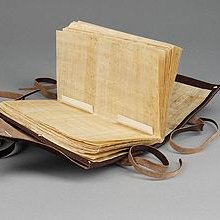


 2/10. In total, there are 75 leaves (about 20% of the Qur’ān). Their preservation actually could be partly explained with codicology. On 2 occasions, groups of 4 quires (each with 8 leaves) were collected together. Probably because these were still stitched together.
2/10. In total, there are 75 leaves (about 20% of the Qur’ān). Their preservation actually could be partly explained with codicology. On 2 occasions, groups of 4 quires (each with 8 leaves) were collected together. Probably because these were still stitched together. 

 2/12. For now, the Ṣan‘ā’ palimpsest is very difficult to understand, because it is an isolated witness. But another ms, DAM 01-29.1, could help in our understanding of the palimpsest and shed light on its connection to ‘Uthmanic text.
2/12. For now, the Ṣan‘ā’ palimpsest is very difficult to understand, because it is an isolated witness. But another ms, DAM 01-29.1, could help in our understanding of the palimpsest and shed light on its connection to ‘Uthmanic text. 

 2/10. In the ancient scribal rule, people use to write dates on manuscripts. Very often, the copyists write a colophon : a short text with sometimes his name, the date and place of copy, his patron’s name, location, etc... Other dates – for storage, restoration – could be added.
2/10. In the ancient scribal rule, people use to write dates on manuscripts. Very often, the copyists write a colophon : a short text with sometimes his name, the date and place of copy, his patron’s name, location, etc... Other dates – for storage, restoration – could be added. 

 2/9. In the middle of the 20th century, scholars established this chronological framework : 1. Empty space > 2. Ornamental headband (in official Qur’āns) // gradual introduction of headings (in private milieu) > 3. Sūrahs headings inserted in ornamental frame.
2/9. In the middle of the 20th century, scholars established this chronological framework : 1. Empty space > 2. Ornamental headband (in official Qur’āns) // gradual introduction of headings (in private milieu) > 3. Sūrahs headings inserted in ornamental frame. 